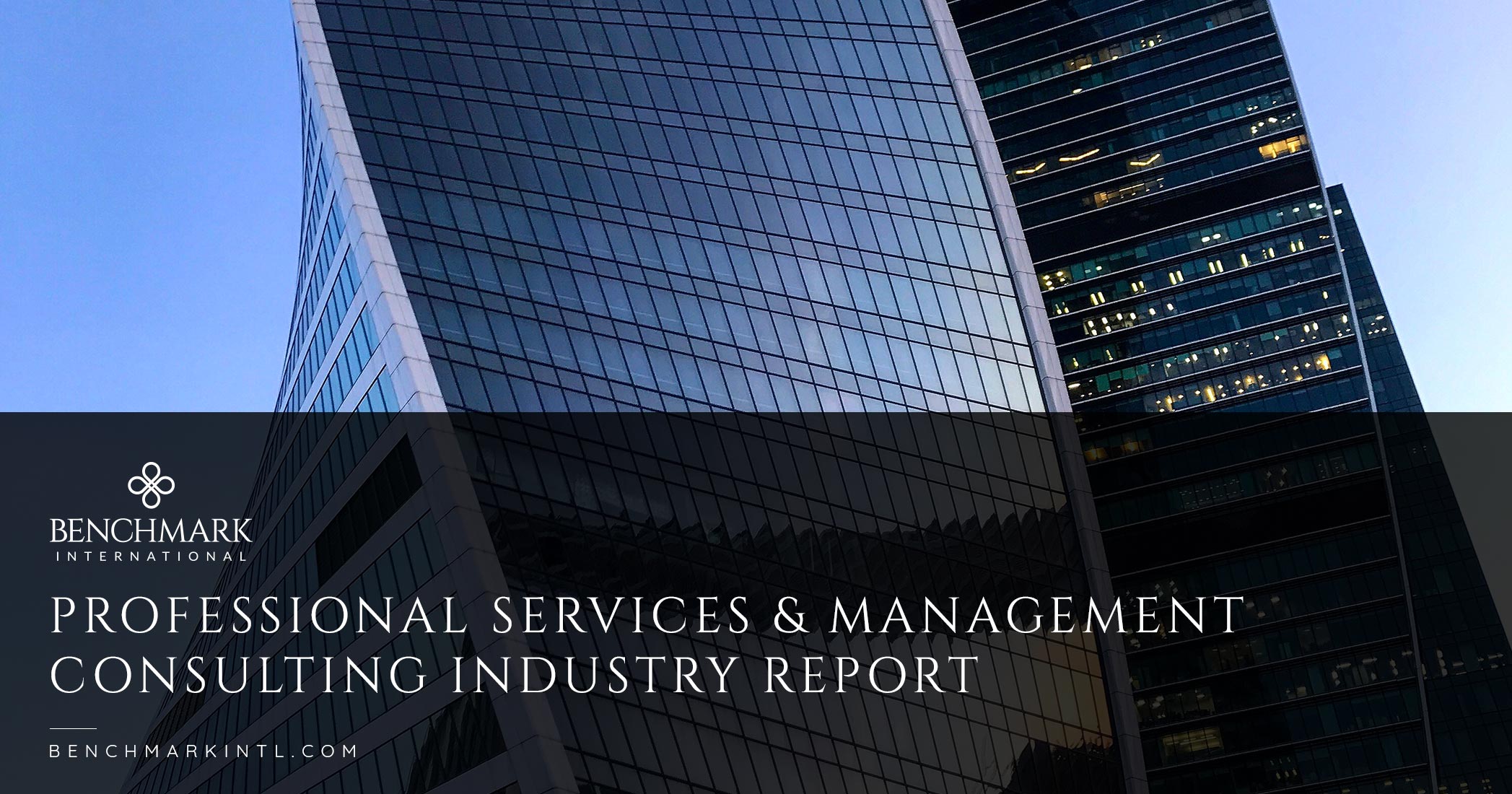The global business analytics market was valued at $76.5 billion in 2021 and is forecast to reach $122.5 billion by 2027, growing at a compound annual growth rate (CAGR) of 8.1%.
READ MORE >>Archives
2022 Global Business Analytics Industry Report
2022 Global Space Industry Report
In 2021, the global space market was valued at $388.50 billion and is expected to reach $540.75 billion by 2026. The sector has expanded by an impressive 70% between 2010 and 2020. The space economy is expected to grow at a compound annual growth rate (CAGR) of 6.84% between 2022 and 2026. Analysts also predict that the space industry will reach $1 trillion in annual revenue by the year 2040, with launch costs lowered by 95%. As the cost of accessing space falls, opportunities for expansion and innovation will increase. The fastest growth is predicted to stem from new space applications and industries.
READ MORE >>Share this:
The Surge Of Cryptocurrency M&A
Deal activity continues to heat up in the cryptocurrency space as the adoption of crypto becomes more mainstream. Last year was a huge year for cryptocurrencies. In 2021, the price of bitcoin was up 49%, Ether was up 390%, and Dogecoin was up a whopping 1,600%. The M&A market for cryptocurrency soared by nearly 5,000% last year. But this is nothing compared to the activity for M&A of crypto companies.
READ MORE >>Share this:
Types of Financial Buyers
There are two types of buyers: strategic buyers and financial buyers. Commercial lenders, family offices, private equity funds, mezzanine funds, independent investors, and other capital providers are all financial buyers. Strategic buyers include everything else. It can be beneficial to entertain both financial and strategic buyers when you are selling your business. Still, it is important to understand how financial buyers think and what you’re dealing with as you work through conversations and negotiations.
READ MORE >>Share this:
Why Does Ebitda Get Adjusted?
In the world of small to mid-market mergers and acquisitions, a number that is very important is a company’s adjusted EBITDA. The adjusted EBITDA is meant to find a company’s true normalized earnings by taking away any outside influences or ownership influences on the company’s bottom line. Some companies do not have to make many adjustments in order to find adjusted EBITDA, while some companies may need many adjustments to arrive at adjusted EBITDA.
READ MORE >>Share this:
Family Business Succession Planning And Success Rates
A family business is technically defined as an organization that is owned and operated by at least two members of the same family. Family businesses actually account for around two-thirds of all companies worldwide, and 90% of companies in the U.S. The largest 500 family-owned companies generate annual revenues of $6.5 trillion. Global research has also demonstrated that well-run family companies are more profitable and stay in business longer than other companies, even with the many challenges they face.
READ MORE >>Share this:
U.S. Small Business Confidence Drops Amid Inflation Concerns
Last month, small business sentiment in the U.S. fell to its lowest level in nearly 9-1/2 years due to concerns surrounding inflation. Yet, at the same time, demand for labor remains more substantial than expected as companies continue to pursue growth.
Share this:
Upcoming Webinar: What You Need To Know About Selling Your Business To A Strategic Buyer
Join us for the complimentary webinar: What You Need To Know About Selling Your Business To A Strategic Buyer.
READ MORE >>Share this:
Why Your M&A Strategy Needs A Marketing Strategy
Several elements play into a successful merger or acquisition, from finance to sales and from operations to HR. Leading up to a transaction, it’s not uncommon for business owners to focus more on these elements and not the area of marketing as an essential part of their M&A strategy.
Marketing is an incredibly important part of ensuring the success of a deal and the integration of companies in the agreement. In addition, effective marketing strategies can help the company create value and growth in several capacities.
Share this:
Tracking The Pandemic Recovery Of Retail And Hospitality Sectors
The Retail Industry
Now that we seem to finally be closing in on the end of the COVID-19 pandemic, 2022 is likely to continue to see overall growth in the retail sector, but not without its share of challenges.
Share this:
Benchmark International Successfully Facilitated a Transaction Between CoreAxis, LLC and eLearning Brothers
Benchmark International has successfully facilitated a transaction between CoreAxis, LLC, and eLearning Brothers.
READ MORE >>Share this:
Top Reasons Business Owners Seek An M&A Strategy
What is an M&A Strategy?
A strategy for a merger or acquisition is the rationale behind the transaction. Your objective should determine the type of deal that is right for your company. Maybe there is even more than one objective. Commonly, these goals are focused on boosting financial performance and mitigating risk.
Share this:
The M&A Process From A Buyer’s Perspective
When it comes to mergers and acquisitions, it is common for a seller to struggle to see the transaction from a buyer’s point of view. This is quite understandable because a business owner spends years, and even decades, building their company into a successful venture. It makes it more difficult to see the transaction from a potential buyer’s perspective. Many M&A transactions fall through because the seller and buyer simply cannot get on the same page. As a seller, you can work with an experienced M&A advisor to help you manage your expectations for the value of your company so that you can not only get the most out of your deal but also make sure the deal goes through. If you’re selling a business, you should understand how the valuation of a company works, what it is based on, and what is important to a buyer.
READ MORE >>Share this:
M&A Trends In The Lower And Middle Markets
In the first quarter of 2022, global middle-market M&A activity maintained the momentum that we saw in 2021. Last year, lower and middle-market companies played major roles in deal-making activity. Companies of all sizes enjoyed significant buyer interest in sectors ranging from tech, transportation, healthcare, manufacturing, and logistics.
A notable imbalance in supply and demand in the lower and middle markets has been driving up the valuations of healthy companies in hot sectors. This trend is expected to continue through 2022 for strong companies in the lower and middle markets, especially in sectors such as healthcare, cybersecurity, cloud computing, artificial intelligence, and niche manufacturing.
READ MORE >>Share this:
Seller Handover In A Business Sale
Handover Process
After completing the sale of your business, there is typically a handover process between the seller and the buyer. One of a buyer’s most significant concerns when taking over a business is that the company’s performance continues as it was before the sale. When a seller is willing to stay on for a handover process post-closing, the buyer has increased trust in the business, resulting in the business selling more quickly and at a higher valuation. Therefore, it will be beneficial to both parties to plan this part of the process well and in advance of the time that the handover will take place. The length, compensation, etc., of the Handover period will be worked through during the Purchase Agreement negotiations. If there is a failure to recognize and offer an acceptable handover period for the business, it could cause a deal to fall apart while it is in due diligence.
Stages Of A Business Handover
The typical stages of a business handover are the Training Stage, Handover Stage, and Assistance Stage. Immediately following the sale, the seller will usually continue to run 100% of the business. During this time, the new owner will take some time to familiarize themselves with the business. Then, as the Training stage begins, the seller will slowly reduce their involvement while the buyer continues to increase theirs. In the Training stage, the seller must create a checklist of items that he can run through with the new owner. Mark each item as complete once it’s finished, and keep this for your records if you run into any issues down the road. It is a good idea to observe how a day in the life of your business typically goes. Take note of every payroll task you complete, every person you communicate with, any supplier or contractor documentation, provide copies of all budgets, information about cash flow, etc. Continue with this process until you feel that you have been able to document all of the particulars that the new owner will need to know in order to keep the business operating smoothly. As the seller trains the new owner, the seller will slowly start to reduce their involvement while the buyer continues to increase theirs. This sequence will continue until the complete handover is achieved.
During the Handover stage, the new owner runs 75%-100% of the business with the seller still on hand to help answer questions and ensure that processes are running smoothly. If you have had a successful Training stage, the new owner will have increased confidence in successfully running the business. This may matter to the seller as well, particularly if there are any deferred payments or earnouts that have been agreed to in the structure of the sale. It is imperative to train the buyer and put them in a position to be successful, as both parties benefit from doing so. The new owner will now be in charge of making crucial decisions and bringing innovative ideas and future plans for the business to the table. Customer and employee relationships with the new owner should be solidly in place at this point, and the seller should have very limited involvement in the day-to-day activities of the business.
Once the new owner is running 100% of the business, it is common to enter the Assistance stage, where both parties have made an agreement to remain in contact for a set period of time in case there are any questions that come up. While the seller is no longer directly engaged with the daily runnings of the company, it is best for them to make themselves available to answer any questions that the new owner might have. Many times the majority of this communication can be handled through email and phone conversations. An essential item to have established for this stage is the amount of time the new owner can expect to receive help from the seller, paying particular care to have the expectations and limitations outlined.
A properly planned Handover period can help the seller and the new owner is mentally prepared for the seller’s exit and help prepare the business, customers, and employees for the handover. Once the handover is complete and the seller exits fully, they can know that the business is in good hands. It is time for them to recover from and reflect on the ownership handover period and identify their next goal to get excited about.
Author
Amy Alonso
Transaction Director
Benchmark International
T: 512 861 3301
E: Alonso@benchmarkintl.com
READ MORE >>
Share this:
2022 Food & Beverage Industry Report
The global food & beverage services market is forecast to grow from $3,232.94 billion in 2021 to $3,678.61 billion in 2022. That represents a compound annual growth rate (CAGR) of 13.8%. Growth is primarily due to companies rearranging operations amid recovery from the COVID-19 pandemic that resulted in so many challenges for the industry. By 2026, the market is expected to surge to $5,235.52 billion at a CAGR of 9.2%.
Share this:
2022 Fintech Industry Report
The global fintech market was valued at $6.5 trillion in 2021 and is estimated to grow at a compound annual growth rate (CAGR) of 13.9% between 2022 and 2028 to reach $16.65 trillion.
READ MORE >>Share this:
Applying EBITDA Multiples To Your Company Valuation
If you are considering selling your business, you undoubtedly need to understand its value. Unfortunately, arriving at that answer can entail many different methodologies, and it often involves the familiar valuation formula of applying a multiple of Earnings Before Interest, Tax, Depreciation, and Amortization (EBITDA).
For example, if a company boasts EBITDA of $1 million, and a five times EBITDA multiple is applied, the company’s estimated value is $5 million. But how do we know what multiple applies to your business? And how do we know if the EBITDA number is even accurate? After all, EBITDA will not be the same for every business.
Share this:
2022 Digital Healthcare Industry Report
Share this:
You Haven’t Missed Out On The Ideal Seller’s Market
2021 was a strong market for business owners looking to sell their companies. The market remains ideal and will do so as we move into the first quarter of 2022. As we are in the middle of this year, there is no better time to consider putting your business on the market.
2021 Recap
M&A activity was moving at a record pace in 2021, thanks to economic recovery, a strong stock market, low-interest rates, rapid digitalization, more SPACs, confident boardrooms, and available debt. The U.S. had reported more than $2 trillion in M&A activity in 2021, with the year on pace to be the most active in history. Not to mention that the second quarter of 2021 was the third straight, with total global M&A value surpassing $1 trillion. That is the first time this has ever happened in three consecutive quarters. So even in the middle of the year, when things typically slow down, we are still seeing a great deal of investment, and the market is still flooded with capital.
Share this:
2022 Marketing Consulting, Branding & PR Industry Report
The Global Marketing Consulting Market
The global marketing consulting market is expected to grow by $3.83 billion between 2022 and 2026, increasing at a compound annual growth rate (CAGR) of 4.75%.
Market growth is being driven by various factors, including continued education, the rising need for improved customer digital experiences, and the providing of custom-made solutions.
Because the global marketing consulting market is rather fragmented, we are seeing vendors trying to remain competitive by deploying growth strategies such as forming strategic partnerships. Over the next four years, 35% of the global market’s growth will originate from North America.
READ MORE >>Share this:
What Are SPACs?
Share this:
2022 Professional Services & Management Consulting Industry Report
Share this:
10 Inspirational Graphics About Retirement
The Pros & Cons Of Buying An Established Franchise
Share this:
2022 Real Estate Industry Report
Share this:
The New Reality and What it Means for Valuation
Is the bull market for privately held companies over? No, that’s not (yet) the reality. But one of the hallmarks of the glorious decade for selling businesses is no more. And unfortunately, many of the acquirers’ gatekeepers weren’t around the last time there was a bull market that looked like this one.
So what is this new normal? Let’s first look at the old normal that we enjoyed from 2010 to 2019 - a nice, slow, smooth macroeconomic recovery. The normalcy of the “teens” allowed small and medium businesses to grow smoothly under ideal conditions. As a result, many businesses experienced near-constant year-over-year growth. And when they’ve failed to do so (or failed to do better), the reasons for the deviation could almost always legitimately be traced directly to some internal event; perhaps the loss of a key salesperson, the launch of a bad enhancement, the lack of ability to pass on an increase in inputs to the customer, or the inability to keep up with a specific competitor.
READ MORE >>Share this:
How to Avoid Seller's Remorse
Selling your business can be an emotional experience. You certainly don’t want to be left at the end of the process with a sinking feeling that you have made a bad deal or sold to a buyer who doesn’t appreciate the value and legacy of the company you have built. However, there are things that you can do to avoid seller’s remorse; we will discuss several of them in this article for you to consider.
It’s best to begin putting together an exit plan sooner rather than later. Preparing well for the transition of a business requires time, action, and significant attention. For many business owners, their business represents the majority of their wealth. Planning for the transition allows you to have enough time to minimize taxes, prepare financially for a living situation without the income from the business and put a plan together for the next phase of life. Although typically, entrepreneurs are not the retiring type, knowing what your next move will be can be very important for your state of mind post-sale. Seller’s remorse can often be avoided by beginning to plan for the transaction three to five years before the business owner wants to exit.
Share this:
Questions to Ask Before Selling Your Company
What’s Your Competitive Advantage on the Market?
Consider why prospective buyers would be interested in purchasing your company. You should be able to identify its assets in order to get a proper business valuation. How unique is your product or service offering? Do you outperform the competitors in your sector or in a particular geographic area? You will also want to consider whether your revenues are stable, growing, or declining. If you understand why someone would be interested in purchasing your company, you will be more equipped to enhance those qualities and effectively articulate them to buyers.
READ MORE >>Share this:
Dispelling Myths about Private Equity Buyers
We have all heard the horror stories from lower middle market business owners. Private Equity buyers will come in and get rid of all of my employees, borrow an absurd amount of money to finance the acquisition, thereby straining my company’s balance sheet and income statement, and then, light a match Goodfellas-style when they are done extracting value from it. But, I’ll let you in on a little secret? The days of financially engineering a path to outsized profits are long gone. While there certainly was an era where Private Equity funds looked to lock in a guaranteed “win” by over-levering the balance sheet, stripping the Income Statement of “fat”- read, people- and quickly flipping to monetize the win, those days are largely behind us. Today, most professional buyers value the team in place more so than any perceived competitive advantage with the product or service offering. I’ll say that again, buyers often view the team as the most important determinant of success- more so even than the core product or service offered by the business.
READ MORE >>Share this:
Strategies for Retaining Talent During a Merger or Acquisition
Mergers and acquisitions are effective solutions for growing a company, getting a competitive edge, accessing new resources, lowering risk, tapping into new markets, and acquiring key talent. Obviously, these are all very appealing to investors and upper management. But employees do not always see it this way.
In actuality, employees often view such a major change as a threat. These negative feelings can lead to employee retention problems, especially in today’s world where labor shortages are already a significant problem. Staff members may feel uncertain about the future of the company, how secure their job may be, how the culture will change, and how a change in leadership will impact them. They can also have their concerns worsened or blown out of proportion if there is not a clear line of communication about what is happening with the company during a transition. Sometimes employees will feel a sense of betrayal. Furthermore, some team members may feel guilty if they keep their jobs while coworkers are victims of downsizing or restructuring. Combine all these factors and quickly end up with people looking for work elsewhere. But that is not good for any deal. Why?
READ MORE >>Share this:
What is The Outlook For Capital Markets in 2022?
Capital markets drive capital to areas of innovation and positive growth, creating jobs and fueling economies. In the US, capital markets fund 73% of all economic activity. This takes the form of equity and debt financing of non-financial companies. Capital markets facilitate debt issuance, which tends to be a less restrictive form of borrowing for businesses. The usage of debt capital is the most prevalent in the US (80%), versus other regions (only 20–30%) where bank lending is more prevalent.
READ MORE >>Share this:
Seller Protection With an Earnout
Earnout Agreements have become increasingly routine in deal structures over the last several years as they are most widely used during times of political and/or economic uncertainty. The earnout payment is additional compensation paid in the future to the seller after the business is sold. An earnout agreement can help bridge a valuation gap or encourage the former owner to remain for a longer period of time following the close of the sale. They should only be considered when the company will continue to operate the same in the years following the sale at the time of closing. While sellers can sometimes be nervous when it comes to agreeing to an earnout, there are protections for yourself that you can keep in mind.
When structuring the earnout, it is important to consider the financial metrics used and choose your benchmark carefully. For example, buyers will often prefer to use an EBITDA target as they believe this will be the most dependable indicator of the business's profitability. On the other hand, typically, sellers do not like using EBITDA due to concerns that the buyer can manipulate the number to benefit the buyer at the end of the earnout period. While sellers usually prefer a marker based on the business's gross revenues, gross profit can sometimes be used as a good compromise for both parties. Suppose an EBITDA calculation must be agreed to move forward with the deal. In that case, the seller can ask for various expenses, overhead costs, etc., to be excluded from the calculation.
Share this:
Mortgage Brokerage Industry Report
The Global Market
The onset of the COVID-19 pandemic rattled the worldwide mortgage market. New lending volumes plummeted to record lows amid declining consumer sentiment, job losses, and nationwide lockdowns in many countries. However, new mortgage lending has remained on an upward trajectory since the second half of 2020. The total number of closed-end mortgage originations jumped from 8.3 million in 2019 to 13.6 million in 2020. That’s an increase of 65.2%. Regulators have kept interest rates at an all-time low. Even though interest rates could begin to tick up at some point, globally, the mortgage brokerage services market is expected to continue to see tremendous growth through the year 2027.
READ MORE >>Share this:
Why Should I Sell My Company?
As the owner of a business, you face a slew of tough decisions nearly every day. One question you may have asked yourself is whether you should sell your company. Several factors can influence your decision to sell, some of which you may not have even thought about. Here you will find a comprehensive list of possible reasons to help you decide if and when selling your business is right for you.
It's at a High Point
Over time, most businesses face different cycles of highs and lows, and potential buyers prefer to acquire companies that are thriving and have a positive future outlook. When your company is performing well, and profits are high, you can opt to sell to get the maximum value in a sale. You may not be ready to retire or move on, but if you sell at the right time, you can make the most money possible and pave the way for a more secure financial future. This can also help you avoid selling at a later date for less value, which would mean less money for your retirement.
If you are far from being ready to retire, there are ways to structure a deal to stay on with the company, working for the new owner and helping them grow the business. This can help you start the transition to your full exit. And in this case, if the business declines or an economic recession occurs, you do not face the risk of losing value because you got out at the right time.
READ MORE >>Share this:
How a Partial Sale of Your Business Can Benefit You
There are strategies available for business owners who are in need of additional capital to grow their business. The partial sale transaction has gained popularity over the last couple of years. When business owners find themselves with limited operating liquidity, they are unable to create the type of growth they desire. A partial sale can bring additional resources into the business that can set into motion long-term growth strategies, increase operational stability and recruit new hires. If you are looking to downsize your company, you can invest that money into different opportunities that may offer you a higher return on your investment.
A partial sale of your business gives you the opportunity to remain involved in the business that you have spent decades building. Following a partial sale, many business owners serve as advisors, senior executives, board members, etc., to assist the buyer with their transition period to new ownership. Smart buyers are open to customizing the role and involvement of the seller once the deal has closed in order that the seller remains with the business for months and years to come.
Share this:
Financial Services Industry Report
Financial Planning & Advisory Sector
In 2022, the market size of the financial planning & advisory industry is $59.2 billion. It is expected to increase 4% this year. Between 2017 and 2022, the market has grown 4.5% per year on average. The size of the market has increased faster in the U.S. than the overall economy.
Industry profit declined in 2020 due to declining assets under management and lower return on assets but increased in 2021 as the economy began to recover. As macroeconomic conditions continue to improve through 2026 gradually, industry operators are expected to benefit from rising equity values and rising interest rates.
High competition is a challenge in the industry, while the population's median age represents an opportunity. This is because the rising median age of the U.S. population is approaching retirement age, which increases the demand for retirement planning, capital preservation, and estate planning.
READ MORE >>Share this:
The Increasing Adoption Of Enterprise Resource Planning And Customer Relationship Management Software
Due to the COVID-19 pandemic, there has been increased adoption of enterprise resource planning (ERP), customer relationship management (CRM), and other entrepreneurial software. In 2020, many companies accelerated their plans to begin using these systems, and the market for them remains hot, particularly for Platform-as-a-Service (PaaS) and Software-as-a-Service (SaaS) models. COVID forced most businesses to digitize their offerings in real-time as consumers began turning to online shopping and employees started working remotely—both trends that are expected to continue into the future.
READ MORE >>Share this:
The Shift From a Seller's Market To a Buyer's Market When Interest Rates Rise
So if you are a business owner considering selling your company, the good news is that right now, it's a seller's M&A market. By October of 2021, total M&A deal activity reached $4.4 trillion, which is an increase of 92% compared to a year ago and is the strongest opening period for M&A since 1980. In addition, merger activity resulted in deals totaling $1.52 trillion in the three months prior to September 27, 2021. That's up 38% from the same quarter in 2020—and more than any other quarter on record.
In a seller's market, demand is high for assets that are in limited supply, giving sellers more pricing and negotiating power. This demand can be attributed to a recovering economy, high cash balances, big government spending, new SPAC buyers, and low-interest rates. Plus, investors are flush with cash and ready to spend it on acquisitions that can help create growth or add capabilities. When market conditions shift, buyers have the upper hand in deal negotiations. And this could happen when the U.S. Federal Reserve increases interest rates in the next year or so.
Share this:
What Does Inflation Mean For Your Ability to Sell Your Business?
Short answer – We don’t know. The M&A market has never interacted with this much inflation before. Inflation is now at a 40-year high. In 1982, there was no M&A market. The birth of the market is most often traced to KKR’s 1988 takeover of RJR Nabisco, as made famous in the 1989 book “Barbarians at the Gate” and the 1993 movie of the same name. Whether that is the actual date of birth or not can be argued. Still, at the time it was commonly thought that the cash for the $25 billion price tag was unattainable because, as the book says, there was a belief that there was not anywhere near that much excess cash floating around for doing deals in the entire world.
READ MORE >> Benchmark International
Benchmark International  Benchmark International
Benchmark International 







































